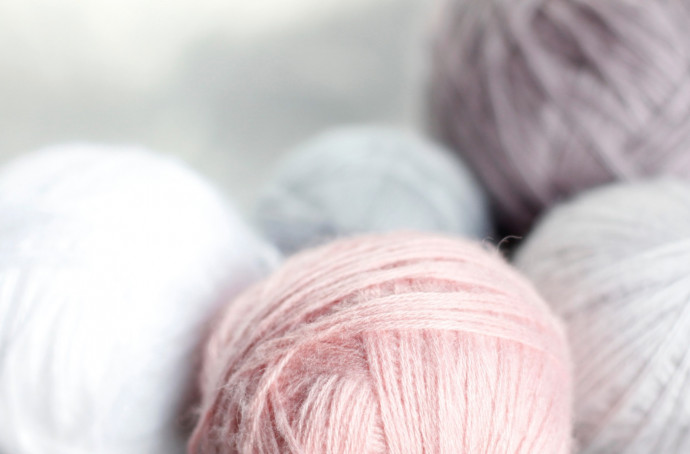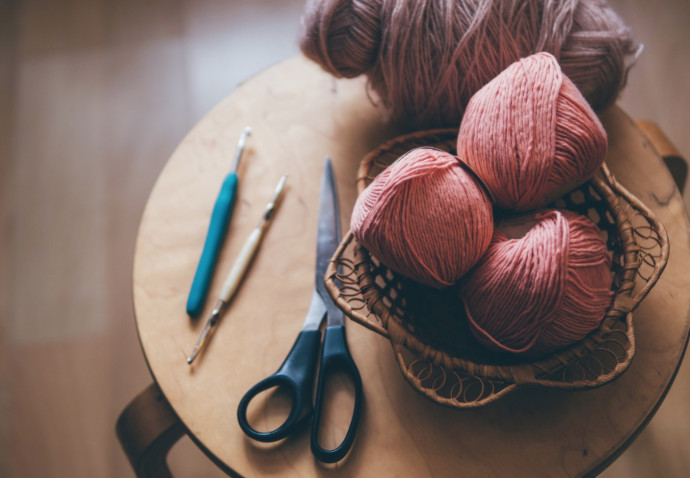Hello, my dear crocheters and welcome the newcomers! Some of you asked me to continue answering the most common crocheting questions, and here we go! One of the most important decisions you must make when you crochet is what yarn to use for your project. The yarn you choose has everything to do with how your finished project looks and stands up to time and wear. The last thing you want to do is spend hours making something only to have it fall apart in the wash, or look worn out after the second wearing. Taking the time to choose just the right yarn will help make your crocheting projects a success. Luckily for us, there is a seemingly endless variety of yarns on today’s market. However, with this diversity comes the matter of choice. Which yarn is best for which types of projects? Understanding the characteristics of various yarns will help you determine the answer. The more you learn, the better you become, in crochet as in life. I hope that this information will lead you down the road to gaining the confidence that makes for good crocheting.
1. What is yarn made of?

Animal, plant, and synthetic fibers are all used to make yarn. Animal fibers include silk produced by silkworms, wool from sheep, alpaca from alpacas, angora from rabbits, and mohair from angora goats. Plant fibers include cotton from cotton bolls, linen from the flax plant, and ramie from an Asian shrub. There are also yarns made from soy, bamboo, pine, corn, and other plants. Acrylic, nylon, polyester, and other synthetic fibers are man-made, in some cases from recycled materials. Lyocell (Tencel) and rayon are man-made fibers produced from cellulose, which is a natural material. “Metallic” yarns are usually a synthetic, metallic-looking fiber spun with another fiber.
2. What are some of the common terms used to describe fiber characteristics?

A: All of the following terms will help you understand and describe the fibers you work with:
- Absorbency. The ability of the fiber to take in water.
- Breathability. The ability of the fiber to allow air to pass through it.
- Dyeability. The ability of the fiber to accept and hold dye.
- Hand/handle. The way a fiber feels, a tactile description that may include words like soft, fine, harsh, stiff, resilient. The hand of a fiber influences the hand of the fabric that it is made into; the fabric might additionally be described by its "drape".
3. Why does fiber content matter?

A yarn’s characteristics, such as its resiliency, hand, loft, absorbency, and dyeability, are largely determined by the fibers that make up that yarn. Being familiar with the features of different fibers helps you make appropriate selections when you choose yarn for a project. You might decide, for instance, that while a luxurious alpaca throw is an excellent choice for your mother, a washable acrylic-blend yarn is a more suitable choice for your four-year-old son’s afghan. Knowing the fiber content of a yarn is also important when it comes time to launder your finished project.
4. What are fiber blends?

Often fibers are blended to take advantage of the best properties of each one. For example, acrylic might be blended with wool to make the yarn machine washable while maintaining the breathability of the wool fiber. A 50 percent alpaca/50 percent wool blend maintains the luxurious feel of the alpaca but is more affordable and more resilient than a 100 percent alpaca yarn.
The fiber with the higher percentage of content in the yarn dominates the yarn’s characteristics. An 80 percent cotton/ 20 percent wool blend looks like a cotton yarn, but it is lighter weight than a similar, all-cotton yarn would be.
5. What is the difference between yarn and thread?

Crocheters use both terms, sometimes interchangeably. Thread is generally thinner, and usually made from cotton, silk, or linen. It is often used for bedspreads, doilies, and lace. Yarn is everything else! I use both, depending on the project.
6. How is yarn made?

The initial processing depends on the fiber. Wool, mohair, and alpaca are shorn from the animals, resulting in a fleece made up of staples (short strands similar to locks of hair). Angora rabbits are combed or clipped to remove their hair. Cotton bolls that look somewhat like the cotton balls in your bathroom cabinet are harvested from cotton plants and processed through a gin to remove the seeds. Silk comes off the cocoon of a silkworm in a continuous filament; these filaments may be cut into manageable lengths before they are processed. To make rayon, cellulose from wood or cotton is processed into a solution called viscose and then extruded through tiny nozzles to form the rayon fiber. Tencel is a cellulose product made from tree pulp, processed in an environmentally friendly manner. Other man-made fibers are produced in a single, long filament but are often cut into staple-like lengths before spinning to more closely resemble the properties of natural fibers.
Before the fibers are spun into yarn, they are combed or carded in order to align the fibers. At this point, they may be blended with other fibers. The fibers are then spun together into an S twist or a Z twist, depending on which way they are turned. The twisted strand, or ply, is spun with one or more other plies in the opposite direction to make a multi-plied yarn. Plying fibers adds strength and balance to the yarn. Sometimes the plying step is omitted, however, resulting in a yarn made of one twisted strand, known as singles. Most commercial yarns are spun by machine, but you may also be able to find some lovely handspun yarns. Dyeing may take place before the yarn is processed (referred to as dyed in the fleece), as carded/combed fibers, or as finished yarn.
7. What are the characteristics of wool that make it so very popular?

Wool is warm, insulating, resilient, breathable, water-repellent, dirt-resistant, naturally flame-retardant, and it takes dye well. Different breeds of sheep yield wool with different characteristics. It is weaker wet than dry, but it can absorb up to 30 percent of its weight in moisture without feeling wet. It may felt if subjected to heat, moisture, and friction. Some manufacturers make wool machine-washable by treating it to the “superwash” process.









So you have to use thread and yarn to be able crochet what you wants to crochet
You can use both! 🥰
I loves to crochet everything that i can crochet with out having any kind of problems with the crocheting yarn at all and since i am slow and doing everything i still be praying that God will bless me in getting it done
Dear Shdonna! Exactly, practice makes perfect 🌷